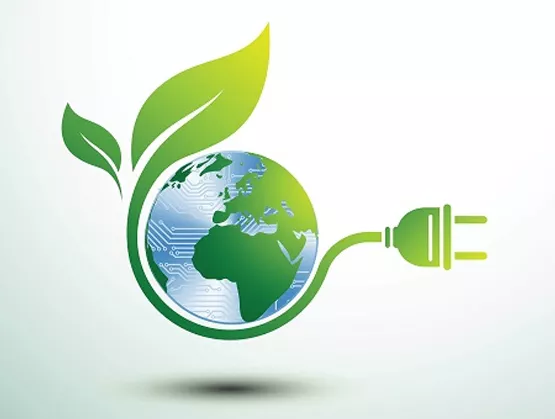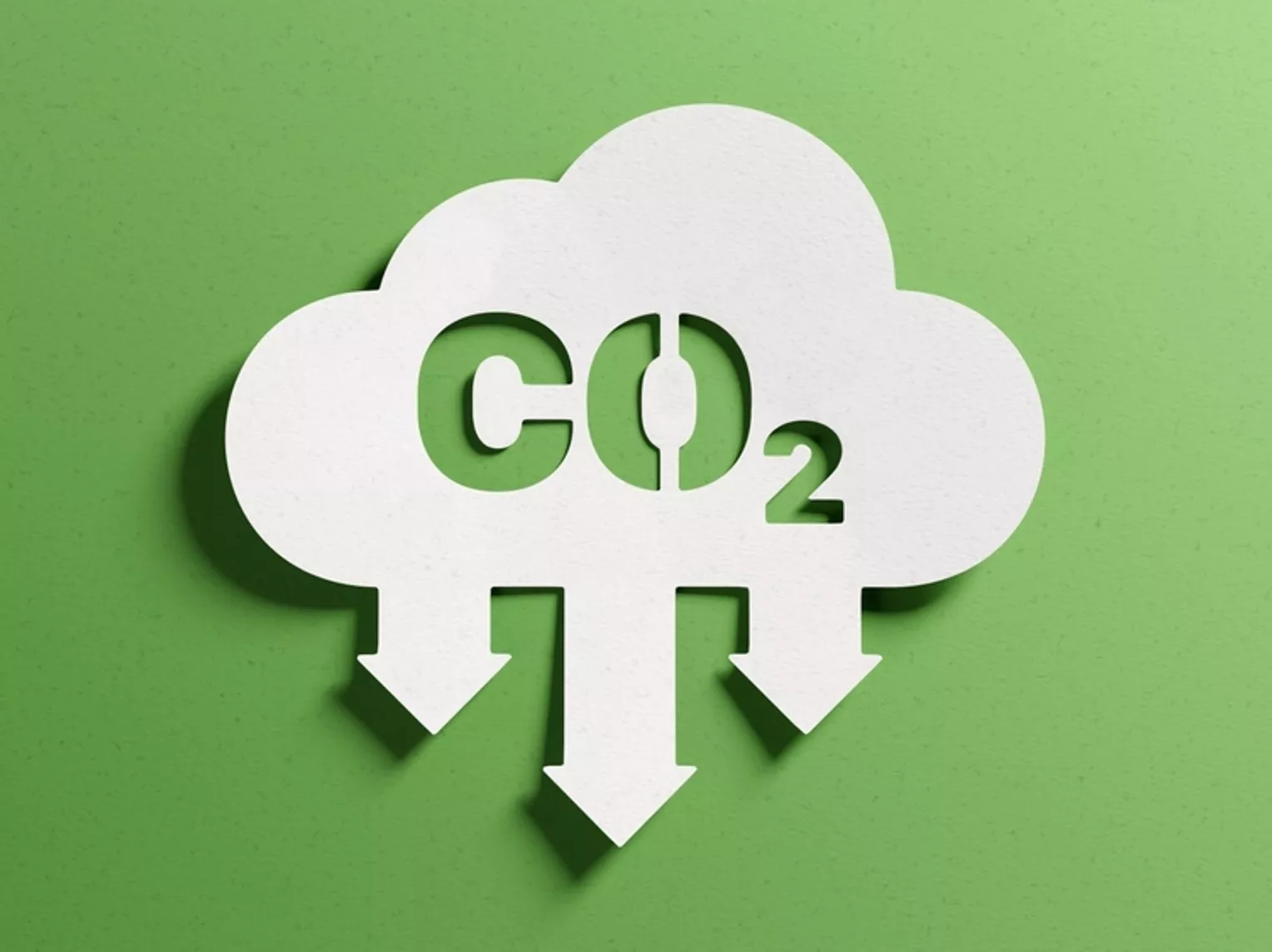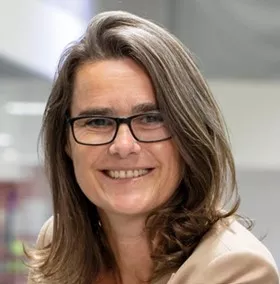
Sustainability and climate change are hot topics among the young, who are given to environmentally-mindedness, and have become a focal point of discussions amongst global government leaders and corporations. For their part, many leading semiconductor companies are increasingly collaborating to improve consumption of resources, such as power and water, both critical in semiconductor manufacturing processes.
SEMI spoke with Kate Wilson, president of the semiconductor division at Edwards Vacuum, about how her personal dedication to sustainability and Edwards Vacuum’s commitment to green practices such as contributing to the semiconductor manufacturing industry’s reduction of carbon emissions. Wilson shared her views on Edwards Vacuum’s commitment to sustainability, and shed a light on the Science Based Targets initiative (SBTi).
SEMI: How and when did your interest in sustainability topics and trends start?
 Wilson: I’ve always been passionate about the environment and our individual and collective responsibility to preserve the environment for future generations. In my role as president of Edwards’ Semiconductor division, I am fortunate enough to be able to turn that passion into action, through the way we develop our products and the opportunity we have to work with our customers to reduce the environmental impact of the semiconductor manufacturing process. Through industry partnership and collaboration, we have a huge opportunity to make a really positive difference, and that really excites me.
Wilson: I’ve always been passionate about the environment and our individual and collective responsibility to preserve the environment for future generations. In my role as president of Edwards’ Semiconductor division, I am fortunate enough to be able to turn that passion into action, through the way we develop our products and the opportunity we have to work with our customers to reduce the environmental impact of the semiconductor manufacturing process. Through industry partnership and collaboration, we have a huge opportunity to make a really positive difference, and that really excites me.
SEMI: How is sustainability shaping the semiconductor industry today?
Wilson: Semiconductors are integral to every aspect of modern-day life. However, the demand for chips comes with some very serious challenges, particularly for the environment. Data centers, for example, are notoriously power hungry. At the current rate of growth, global computing energy could exceed global energy production sometime between 2040 and 2050!
Semiconductors also take energy, as well as water and other resources, to manufacture, and the manufacturing process produces some harmful gases that need to be managed. So we have to be very conscious in the semiconductor industry of how we ramp our production capacity to meet growing demand without impacting the environment.
The solution lies largely in two areas:
- Innovation: for example, developing higher-efficiency chips that consume less power for the end user.
- Collaboration: by working collaboratively throughout the supply chain, we can reduce our carbon footprint in the semiconductor manufacturing industry as a whole.

SEMI: What is the most pressing next step for the semiconductor industry players to pursue this sustainability goal?
Wilson: Before I give my thoughts on what we can do, collectively, as an industry, let me first tell you how we’re approaching the problem in Edwards’ Semiconductor business.
Firstly, we have rewritten our vision and mission statements to make sure that sustainability is at the heart of what we do and guides our forward strategy. Within that, we acknowledge our role as part of the semiconductor manufacturing supply chain, and our role in helping our customers reduce their environmental impact.
I’m also pleased to report that, as part of the global Atlas Copco group, we have joined more than 1,000 companies worldwide in leading the zero-carbon transition by joining the Science Based Targets initiative (SBTi). The Science Based Targets initiative provides companies like Edwards with a clearly-defined path to reduce their emissions.
The framework covers areas directly owned – which in simple terms means our operations. It also covers areas over which we have a level of control or influence, for example our energy sourcing, the transportation methods we use, business travel, and employee commuting, to name a few.

And finally, the framework covers our downstream supply chain, which is what we can do to help our customers reduce their carbon footprint in areas such as the packaging and energy consumption of our products.
The industry as a whole can do so much more if we work together, so I urge all organizations involved in the semiconductor supply chain – suppliers, OEMs and manufacturers – to sign up to Science Based Targets.
Moreover, as an industry with huge political and financial clout, we also have a massive opportunity to influence climate policy on a global scale, and our biggest opportunity to do that is through the decarbonization of the grid. With our substantial influence as a globally critical industry, we need to come together and lean on governments around the world in the push towards renewable energy.
SEMI: What can semiconductor companies do to improve manufacturing and create new products and services for a sustainable future?
Wilson: Quick wins include the use of 100% renewable electricity wherever possible, and a focus on reducing and recycling materials. But the real key is innovation.
At Edwards, our abatement products already have a significant impact on our customers’ greenhouse gas emissions – preventing 17.7 million tons of CO2e emissions at our customers’ facilities in 2020, which is roughly the equivalent of the annual combined emissions of the cities of Madrid and Milan.
 To help our customers further reduce their footprint, we’re looking for further advancements to our abatement technologies, and we’re aiming for a 5% carbon footprint reduction in our new products.
To help our customers further reduce their footprint, we’re looking for further advancements to our abatement technologies, and we’re aiming for a 5% carbon footprint reduction in our new products.
We’re also pursuing partnerships within the industry to develop materials recycling technologies that will further enhance the reduction of greenhouse gas emissions. As an industry capable of going from 1 micron to less than 7 nanometers in the last 20 years, the environmental challenge is something we can tackle. We’re smart enough – innovation is in our DNA.
SEMI: How can semiconductor manufacturing analytics help leverage data to address important sustainability initiatives?
Wilson: Artificial intelligence, automation and data bring about huge opportunities to make productivity gains in semiconductor manufacturing – and the more operational excellence we achieve, the more sustainable we are. Data analytics can help us understand where we can improve our manufacturing and production, reduce machine downtime, gain new efficiencies through better decision making, and feed into our new product innovation. It’s a big area of focus for us at Edwards, both in our own operations, but also in terms of how we can add value to our customers.
SEMI: And if we talk about sustainability regulations, what is in your opinion the main challenge if we consider the current legislations?
Wilson: Sustainability and the environment are not problems of the future, they’re problems we need to tackle now. Yes, there’s been more focus in recent years and a lot of talk around environmental sustainability, but we need more action. The main challenge – and also the biggest opportunity – is decarbonization of the grid. In some countries, legislation is in place to make this happen, but on a global scale, it’s just not happening fast enough. As an industry, we need to use our voice to influence that.
SEMI: Finally, what are your wishes for the European semiconductor industry?
Wilson: Closer cooperation. We need to work together as an industry. We need to come together and use our influence, our pursuit of innovation, and make a positive change.
 Kate Wilson, president of the semiconductor division at Edwards Vacuum, has more than 25 years’ experience in vacuum management solutions for the global semiconductor industry. Wilson has held various strategic roles since joining the Edwards Vacuum graduate scheme in 1994. More recently Wilson was the VP Marketing Subfab Solutions for Edwards’ global Semiconductor business until January 2021 where she took over the role of president of the Semiconductor Division (Subfab). Wilson is a passionate ambassador for diversity and inclusion both within the organization, and in the wider semiconductor and engineering sectors. Wilson holds a BEng in Mechanical Engineering from Brunel University in the UK.
Kate Wilson, president of the semiconductor division at Edwards Vacuum, has more than 25 years’ experience in vacuum management solutions for the global semiconductor industry. Wilson has held various strategic roles since joining the Edwards Vacuum graduate scheme in 1994. More recently Wilson was the VP Marketing Subfab Solutions for Edwards’ global Semiconductor business until January 2021 where she took over the role of president of the Semiconductor Division (Subfab). Wilson is a passionate ambassador for diversity and inclusion both within the organization, and in the wider semiconductor and engineering sectors. Wilson holds a BEng in Mechanical Engineering from Brunel University in the UK.
Serena Brischetto is director marketing and event operations at SEMI Europe.